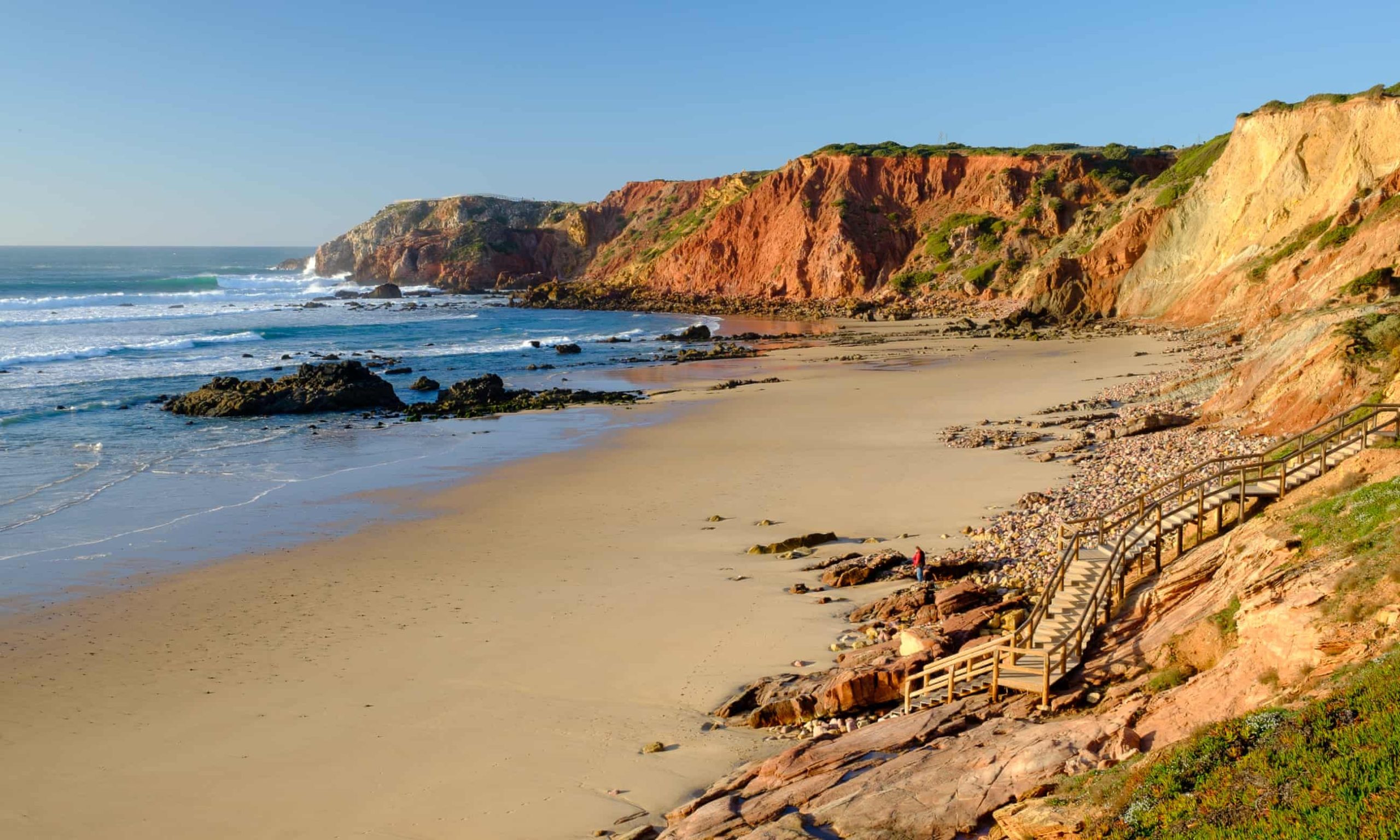
A self-guided walk along the dramatic cliffs and deserted footpaths of an Algarve a world away from the beach resorts and golf courses
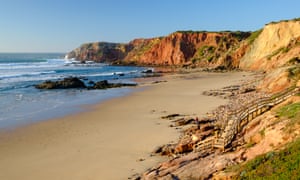
The hunt for octopus begins soon after we arrive in Sagres, in the western Algarve. Within minutes we find it at Restaurante Gigi, where tender chunks are served in olive oil and garlic, and garnished with sweet potato. The craving for Portuguese soul food sated for now, we wander down Sagres’s main drag of low-slung whitewashed houses towards the 16th-century fortress that looms over the Atlantic. It feels as if we are on the far edge of Europe: its most south-westerly point lies a short way north – at Cabo de São Vicente, whose lighthouse I can just about see.
I’m in Portugal to get an introduction to the western Algarve on Headwater’s four-night walking break, before the freshness of spring turns into summer’s torrid heat. This is the best time to visit for wildflowers and warm days. Beginning and ending in Sagres, the walk follows part of the Rota Vicentina, an old pilgrims’ route that has been updated and is exceptionally well signposted. Its two trails, the Historical Way and the Fishermen’s Trail, between them stretch for over 350km, mostly in Alentejo to the north. But I’m focusing on the south-west, exploring an Algarve far away from the beach resorts and golf courses further east.

After a half-hour drive north from Sagres, our first, 17km, trek starts at Praia do Amado, where surfers catch waves from an enormous beach backed by ochre cliffs. This is a brief glimpse of the Atlantic coastal drama to come.
We continue to the village of Carrapateira, where we stop for coffee in the pretty toy-town village square surrounded by white cottages, before following the Sinceira river through cork forests, with their alien-looking half-stripped trees. The day’s goal is Pedralva, an abandoned village that has been transformed into a scattered hotel of little whitewashed houses. Rescued from dilapidation by Lisbon ad man Antonio Ferreira in 2006, the 24 cottages are rustic yet comfortable, with kitchens and a little seating area outside each one.
We’re staying in this peaceful place for just one night and it doesn’t feel like enough – especially with the choice of a pizzeria and the main Sitio da Pedralva restaurant. Dinner at the latter – a relaxed, airy, friendly place – is a delight. We share a generous flambéed chouriço starter, to make sure we have room to do justice to fiery piri-piri chicken main course.
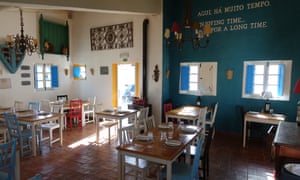
After a few sparse showers the following morning, we wander towards the small town of Vila do Bispo, 18km away, meeting hardly a soul. Wild lavender and eucalyptus scent the air as we climb forested tracks, and there’s the promise of wild strawberries to come – in late April, the landscape is vivid with rock roses and yellow broom.
A suggested detour to Praia da Barriga takes us to a beach backed with jagged slate cliffs, as though a giant with a cleaver has hacked away with clumsy enthusiasm. In this sheltered place in front of crashing waves, we have just time to eat our sandwiches before the tide drowns our picnic spot.
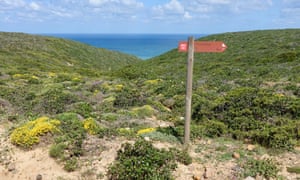
After a gently uphill wooded track levels out, Vila do Bispo comes into view, blinding white in the sunshine, with its trim Moorish-style cottages. A buzz comes from cafe tables surrounding the main square, Praça da República. Café Convívio lives up to its name – just the spot for a simple dinner of grilled squid.
Our final walk saves the best for last. The country lanes soon bring us to the coastal path, where the sea and cliffs become our constant companions. We hike from one spectacular viewpoint to the next, from one windswept rocky bay to another. Can you really keep up a state of awestruck wonderment over 16km? In this part of the Algarve, you can.
Spoilt for choice for scenic lunch spots, we plonk ourselves on the herb-covered terracotta cliff overlooking Praia do Telheiro. The rough path then leads us down a wooden ladder into a gulley, where we have two choices. We can either take an easy inland route away from the coast to the lighthouse at Cabo de São Vicente, or carry on along the cliffs of the Fishermen’s Trail on a flinty moonscape that’s better suited to mules than human feet. The moonscape wins.

It soon becomes a game of “spot the cairn” as the blue and green waymarked posts give way to cairns that melt into this wild terrain. My ancient hiking boots have split, and I expect the sole of one to give up the unequal struggle against this rocky wilderness and detach itself completely. But it holds in there as we reach the lighthouse and the end of the continent. Next stop: New York.
Only there’s a touristy circus parked by the lighthouse to contend with first. Souvenir sellers mingle with food stalls, one offering the opportunity to buy the last bratwurst before New York from two German girls. Delicious as the sausage is, the stalls feel intrusive after the exhilarating wildness of those cliffs.
Still, there’s a post-walk stroll along the sands of Praia do Martinhal in Sagres to enjoy. And the unforgettable pleasure of a luscious pork and clam cataplana at the Estrela do Mar cervejaria that evening. It had been a tantalising, all too brief taste of life in the wild west.
The Guardian

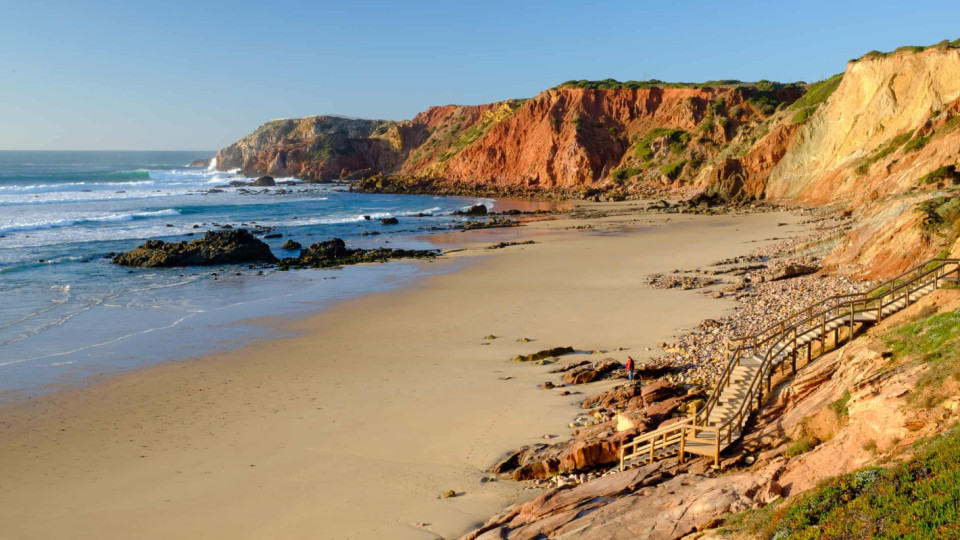
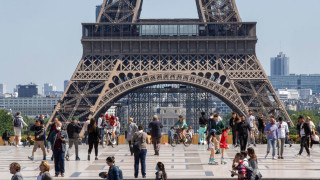





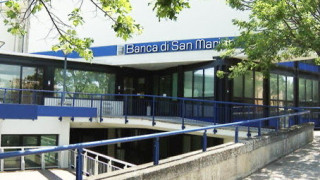


Leave a comment